White Blindness and Denial Characterize U.S. Racial Attitudes at the End of the Obama Era
America remains separate and divided. Despite having a black president for two terms, deep racism thrives in our country.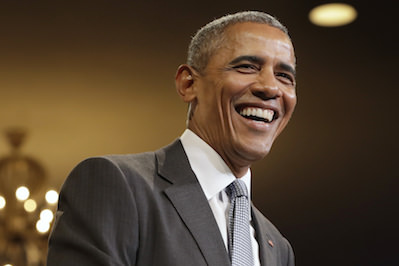
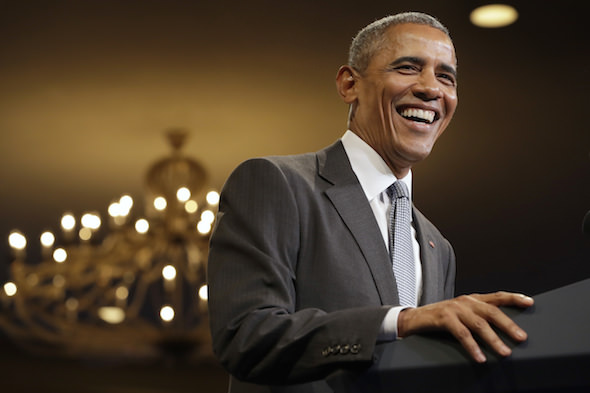
President Barack Obama. (Jacquelyn Martin / AP)
Half a century after the policy triumphs of the civil rights movement, as the nation’s first black chief executive nears the end of his presidency in the shadow of race riots, anti-black racism remains entrenched in the United States. The problem is less an issue of individual prejudice on the part of white Americans and more about the way leading institutions and social structures function to make black Americans disproportionately poor, sick, injured, uninsured, jobless, homeless, underpaid, arrested, criminally marked and incarcerated. The culprits include:
This is just the short list.
Savage Inequalities
It’s no wonder that average black household wealth is 94 percent less than average white household wealth ($6,314, compared with $110,500), that black families’ median income is less than half of white families’ median income, or that the black poverty rate is nearly three times higher than the white poverty rate. A disheartening 40 percent of the nation’s black children—including 49 percent of black children under 6 years old—are growing up beneath the federal government’s notoriously inadequate definition of poverty, compared with 14 percent of white children.
In Milwaukee, where the police killing of a young black man sparked rioting in August, the official black poverty rate is 40 percent, more than double the white rate. More than a sixth of the city’s black residents live in “deep poverty,” at less than half the official poverty measure, as do a fifth of the nation’s black children.
As serious cost-of-living research has long shown, families on average need an income of about twice the poverty level to cover basic expenses. By that standard, the National Center for Children in Poverty finds that two-thirds of the nation’s black children live in low-income families, compared with just less than a third (31 percent) of its white children.
Housing Markets Distribute More Than Dwellings
Residential segregation by race—still quite high in the U.S.—plays a critical role in feeding these stark disparities. This is because one’s place of dwelling is strongly connected to economic status and opportunity. As sociologists Douglas Massey and Nancy Denton noted in their important 1998 book “American Apartheid: Segregation and the Making of the Underclass,” “housing markets … distribute much more than a place to live; they also distribute any good or resource that is correlated with where one lives,” including jobs, education, safety, access to green spaces, civic community, exposure to crime, services and wealth in the form of home equity. By concentrating poor and working-class black people in a restricted number of geographical places, including “downstate” (in Illinois) and “upstate” (in New York and Michigan) prisons, U.S. de facto race apartheid reinforces blacks’ persistently disproportionate presence in the lowest socioeconomic places.
White Denial Lives
Sadly, however, most of white America continues its longtime pattern of ignorance and/or denial regarding the persistence of racial oppression in the United States. The most recent comprehensive racial attitudes survey from the Pew Research Center shows that less than half (47 percent) of white Americans understand even the elementary fact that blacks are worse off financially than whites in the U.S. today.
Half of white Americans with an opinion on the matter actually think that race relations in the U.S. right now are “good”—a remarkable belief to hold in light of the extreme racial inequalities that persist and the significant black protest and police state response that has arisen over the epidemic of racist police shootings since 2014. Nearly two-thirds of black Americans say the opposite—no surprise.
Nearly four in 10 (38 percent) whites think that America has made all the changes it needs to achieve black-white equality. By stark contrast, 88 percent of blacks think more changes are required.
Just barely more than a fifth (22 percent) of whites (as opposed to 64 percent of blacks) think that blacks are treated less fairly than whites in the workplace.
A mere fifth of whites see disproportionately unfair treatment of blacks in the electoral system.
Just a quarter of whites (in contrast to 66 percent of blacks) see anti-black bias in mortgage applications.
Well less than half (43 percent) of whites see such bias in the courts system. And just half of whites (as opposed to 84 percent of blacks) see it in police behavior.
Overall, just barely more than a third (36 percent) of whites (as opposed to 70 percent of blacks) see racial discrimination as a relevant “reason why some blacks have a harder time getting ahead” in the U.S.
And whites are very widely unimpressed by the notion of institutional racism. More than two-thirds of whites (70 percent) think that the “biggest problem for blacks today is individual prejudice, not institutional racism.” Fewer than half (48 percent) of blacks agree.Whites also think that the problem of racial oppression gets too much attention in the U.S. Just more than a quarter (27 percent) of whites (as opposed to 58 percent of blacks) think the country pays too little attention to race as an issue.
Not surprisingly, just four in 10 white Americans support the Black Lives Matter (BLM) movement. More than half of white Republicans oppose BLM, and more than a third of those Republicans do so “strongly.”
Still Separate, Unequal
What explains these clueless and even vicious white racial opinions as we come to the end of the second term of the nation’s widely heralded first black presidency, in a nation that claims to celebrate the legacy of Martin Luther King Jr. (whose bust sits behind Barack Obama in the Oval Office)? Certainly not any increase in black economic status or government polices to advance racial equality and confront barriers to black advancement. Obama has presided over a significant ongoing reduction in black net worth, reflecting the racially disparate impact of the Great Recession and the subsequent weak “recovery” on more vulnerable black Americans.
Segregation by race—de facto apartheid—is still deeply embedded in American life. In the Milwaukee metropolitan area, for example, the black-white residential dissimilarity index is 81. Eight of every 10 blacks residing in the region would have to move to another census tract for black people to be evenly spread across the region.
Harsh racial inequality and apartheid have continued with little protest or even comment from the nation’s first half-white president, a “vacuous to repressive neoliberal” (according to Adolph Reed, a political science professor at the University of Pennsylvania), who rose to power in the name of “color-blind” post-racialism and has, as president, been reluctant to address U.S. racial oppression in a forthright manner that might ruffle majority white feathers.
A Not-So-Split Decision
This white racial blindness and indifference is rooted in six key interrelated and overlapping factors.
A first part of the problem is, of course, segregation. Beyond its role in generating and reinforcing racial inequality, American apartheid helps keep black experience invisible to most whites.
A second part of the explanation for white racial blindness and denial has to do with the difference between what might be called “level-one racism” and “level-two racism.” “Level one” refers to open public bigotry and prejudice. “Level two” denotes the underlying covert societal or institutional racism that operates independent of subjective prejudice. Level-one racism has a long and sordid history, but it has largely been defeated, outlawed and discredited in the U.S., most dramatically in the South, but across the nation as well. The deeper, covert level of racism, however, has not been defeated—not by a long shot. It involves the more impersonal and (to be fair) the more invisible operation of social and institutional forces and processes in ways that “just happen,” but nonetheless serve to reproduce black disadvantage in the labor market and numerous other sectors of American life. These processes are so ingrained in the social, political and institutional sinews of capitalist America that they are taken for granted and barely noticed across the reigning media and political culture.
This “split decision”—liberal victory on level-one racism and continuing progressive defeat on level-two racism—is tricky. It’s not about glass half-empty versus glass half-full. Perversely enough, level-two institutional racism may be deepened by civil rights victories and related black upward mobility into the middle and upper classes, insofar as those victories and achievements have served to encourage the great toxic illusion that, as black lawyer and author Derrick Bell once put it, “the indolence of blacks rather than the injustice of whites explains the socioeconomic gaps separating the races.”
The Oprah-Obama Effect
A third explanation is what some early 21st century anti-racism thinkers called “the Oprah Effect.” It’s been harder than in previous eras to blame millions of white Americans for believing that racism is dead at a time when U.S. public life is filled with affirmations of the integration ideal and the nation’s ostensible progress toward achieving it. Highly visible black success stories also help exonerate white blindness. As black American law professor Sheryl Cashin noted 12 years ago, there are now enough examples of successful middle- and upper-class African-Americans “to make many whites believe that blacks have reached parity. … The fact that some Blacks now lead powerful mainstream institutions offers evidence to whites that racial barriers have been eliminated; [that] the issue now is individual effort. …
“The odd black family on the block … [or] examples of stratospheric black success,” Cashin wrote, “feed these misperceptions, even as relatively few whites live among and interact daily with blacks of their own standing.”
Now, there is Obama. His ascendancy and ubiquitous media presence has been something of a final nail in the coffin of many white Americans’ already slight willingness to admit that racism continues to provide meaningful barriers to black advancement and equality: Look, the president is black, OK? Don’t talk to me about racism anymore! Obama’s presidency has provided perhaps the ultimate opportunity for whites to congratulate themselves on American racial progress.Neoliberal Racism
A fourth factor is the continuing and longstanding reign of neoliberal ideology, which privileges individual experience and pain over any and all social categories and structural or institutional factors—not just race and racism. With neoliberalism’s ascendancy in the dominant public discourse, the prolific left cultural theorist Henry Giroux has noted, the nation’s “pervasive racial hierarchies collapse into power-evasive strategies such as blaming minorities of class and color for not working hard enough” and for “refusing to exercise individual initiative.” Even as an insidious, increasingly invisible racism “functions” as “one of the deep and abiding currents in everyday [American] life,” this discourse works “to erase the social from the language of public life as to reduce all racial problems to private issues [of] … individual character and cultural depravity.” This “neoliberal racism … can imagine public issues only as private concerns.” It sees “human agency as simply a matter of individualized choices, the only obstacle to effective citizenship being the lack of principled self-help and moral responsibility” on the part of those most victimized by structural oppression. “Human misery is largely defined as a function of personal choices” and “all problems are private rather than social in nature.”
The Nightly News and the Don Lemon Effect
A fifth factor is the Great Recession and the tepid “recovery” that followed. White willingness to acknowledge societal racism and the need to open doors to non-white opportunity is always negatively correlated with whites’ sense of economic security. The more precarious their material situation and prospects, the less predisposed they are to support increased opportunity for others.
A sixth and critical factor is the “mainstream” corporate news media, on which white America is overdependent for its understanding of black experience, thanks in no small part to persistent apartheid. In any major U.S. metropolitan area, smartly dressed and attractive, racially and ethnically mixed and cross-gender news teams report a regular litany of scary stories of violence and criminality from black inner-city ghettos and black inner-ring suburbs. And just as the weather forecasters report ever more alarming and extreme meteorological developments without the slightest reference to the underlying problem of anthropogenic global warming, the drumbeat of lurid news from black provinces is never accompanied by any serious discussion of the horrific crime- and violence-generating conditions imposed on black America by historical and current societal U.S. racism. Devoid of essential historical and societal context, the black misery that whites see on the news strikes many Caucasians as self-imposed and richly deserved.
The likeable, upper-middle class, black news anchors and reporters are themselves part of whites’ racial blindness problem. Call it the Don Lemon Effect. They, too, are among “the good blacks” who function to demonstrate that the far greater number of black Americans struggling to get by created their own hard times. And the fact that whites like “good” blacks reinforces the majority white belief that racism (superficially understood at the low bar of individual prejudice) has been defeated in the U.S.
How They Police vs. What They Police: Tinder and Spark
It is true that major corporate news media have in the last two years paid unusually high attention to racially biased police conduct in connection with protests sparked by an epidemic of police-generated black fatalities. But the deeper racism-denying media pattern—itself a key component of level-two racism—has not thereby been undermined. Excessive police force is just one small, if critical, part of the bigger problem of institutional racism just within the criminal justice system (see Loyola University New Orleans law professor Bill Quigley’s recent essay on “Eighteen Examples of Racism in the Criminal Legal System”).
The attention is always fleeting. The recent black uprising in Charlotte, N.C., was swept off the nation’s telescreens by the first presidential debate, wherein Donald Trump channeled widespread white sentiments by voicing this opinion on how to approach the race problem in America: “We need law and order. And when I look at what’s going on in Charlotte … [a] city where I have investments, when I look at what’s going on throughout … our country … we need law and order. … And I just got … the endorsement of the fraternal order of police.”
At the same time, the major-media reporting on the rise of BLM has been about how police carry out their tasks vis-a-vis black America: how they police blacks. It’s no minor matter, to be sure. Still, just as important but missing from the national media coverage and commentary is the matter of what law enforcement polices when it comes to race, space and class. It becomes easy to lose sight of the fact that the police enforce the overlapping and interrelated evils of apartheid and inequality. It’s about keeping blacks in their place, in more ways than one. This is what they police. And that is what provides the tinder for the riots and giant black protests that have been sparked by police killings of black men (mainly) during Obama’s second term.
The roots of racial disparity are in the system. The underlying and systemically entrenched conditions would not be any more acceptable if the cops were less murderous and more “sensitive.” They certainly will not be undone by corporate Democrats’ and corporate-media talking heads’ favorite solution: “community policing,” which provides fake-liberal cover for gentrification and enlists middle-class homeowners and upper-end renters in the enhanced surveillance and racial/socioeconomic cleansing of high-property-value neighborhoods.
Another media-ignored issue is the question of how and why American government at all levels pours so much taxpayer money into ever more militarized policing instead of meeting basic human needs. It’s long past time to trade in the police state and the vast U.S. military empire for (among other things) free-lunch and green-jobs programs, for free health clinics, for a guaranteed national income, for single-payer health insurance, for true neighborhood revitalization, including community gardens and genuine public and popular education in the nation’s many truly disadvantaged ghettos, barrios and reservations.
By introducing real and environmentally sustainable social justice and equality (as advanced by the officially marginalized Green Party), the nation and its various jurisdictions wouldn’t really “have” to police folks at all.
Don’t expect to hear anything about that on the evening news—or in the next, and thankfully final, ugly, white, ruling-class presidential debate.
Independent journalism is under threat and overshadowed by heavily funded mainstream media.
You can help level the playing field. Become a member.
Your tax-deductible contribution keeps us digging beneath the headlines to give you thought-provoking, investigative reporting and analysis that unearths what's really happening- without compromise.
Give today to support our courageous, independent journalists.
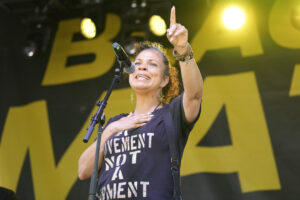
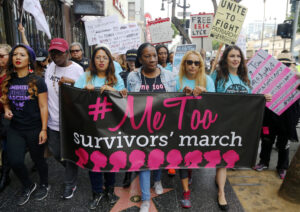
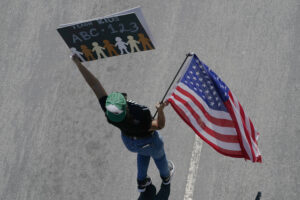
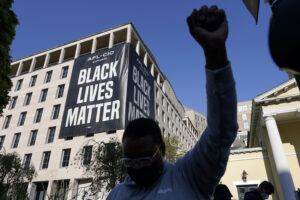
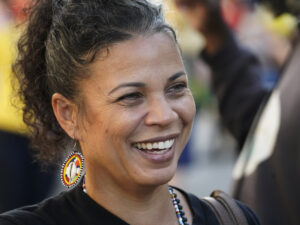
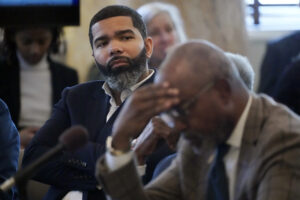
You need to be a supporter to comment.
There are currently no responses to this article.
Be the first to respond.